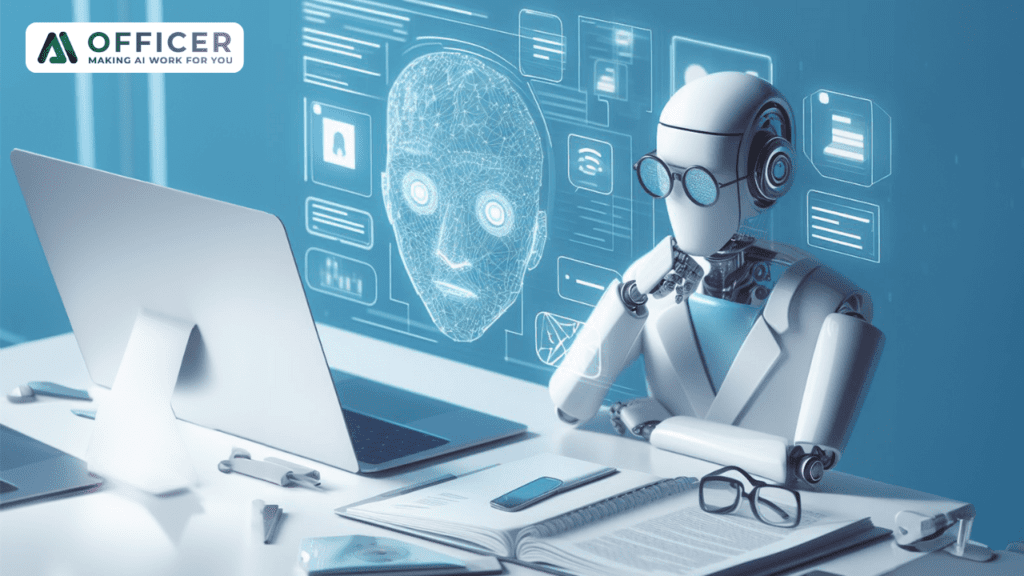
In the digital era, the influx of content in various forms – audio, video, and text – is overwhelming. Businesses, educators, researchers, and creators constantly seek efficient ways to manage this deluge of data. Artificial Intelligence (AI) emerges as a pivotal tool in this scenario, offering powerful solutions for transcribing and analyzing content. This blog explores how AI is revolutionizing the way we transcribe and analyze content, its benefits, challenges, and future implications.
Transforming Transcription with AI
The Evolution of AI in Transcription: Traditional transcription was a time-consuming task, requiring hours of manual labor to convert speech into text. AI has transformed this process by introducing automated transcription services. These AI-driven tools can quickly and accurately transcribe audio and video content, drastically reducing the time and effort involved.
Accuracy and Efficiency: AI transcription tools are not only fast but also highly accurate. They utilize advanced speech recognition algorithms that can understand various accents and dialects. Moreover, they’re capable of identifying different speakers in a conversation, making it easier to follow complex discussions.
Deep Analysis for Better Insights
Content Analysis: Beyond transcription, AI can analyze text for themes, sentiments, and patterns. This analysis is invaluable for businesses and researchers who need to glean insights from large volumes of data. AI can quickly sift through content, identifying trends, sentiments, and even predicting future patterns.
Language Processing Abilities: AI tools are equipped with Natural Language Processing (NLP) capabilities, enabling them to understand and interpret human language in a sophisticated manner. This ability allows for more nuanced analysis, including sentiment analysis, keyword extraction, and topic modeling.
AI in Action: Real-World Applications
Business Intelligence: Companies use AI to transcribe and analyze customer calls, meetings, and presentations. This information is crucial for improving customer service, developing strategies, and making informed decisions.
Educational Uses: In education, AI transcription is a game-changer for students and educators alike. Lectures can be transcribed and analyzed for key concepts, aiding in study and revision.
Research and Media: Researchers and journalists leverage AI to transcribe interviews and analyze content for significant insights, saving valuable time in data processing.
Navigating the Challenges
Dealing with Accents and Dialects: While AI has made significant strides, it still faces challenges in accurately transcribing diverse accents and dialects. Continuous improvement in speech recognition algorithms is addressing this issue.
Privacy Concerns: With AI processing sensitive data, privacy becomes a paramount concern. Ensuring data security and compliance with privacy laws is essential in the use of AI for transcription and analysis.
The Road Ahead
Continuous Learning and Improvement: AI systems are continually learning and evolving. Future advancements in AI are expected to bring even more accuracy and efficiency to transcription and analysis.
Integration and Accessibility: As AI tools become more integrated with other technologies and more accessible to a wider audience, their impact will be profound across various sectors.
Conclusion
The integration of AI in transcribing and analyzing content is not just a technological leap; it’s a transformation in how we handle information. It offers unprecedented efficiency, accuracy, and depth in understanding and utilizing data. As AI continues to evolve, its role in managing and interpreting the world’s ever-growing content will only become more significant, opening new vistas of possibilities across all sectors.
Advances in AI Transcription:
AI transcription services have continued to improve in accuracy and speed. Some services can now transcribe audio and video content in real time. This makes it possible to use AI transcription for live events, such as meetings, lectures, and webinars.
AI transcription is also becoming more affordable. This makes it a more practical option for businesses, educators, and researchers.
AI-Powered Content Analysis:
AI-powered content analysis tools are becoming increasingly sophisticated. These tools can now analyze text for a wider range of factors, such as sentiment, emotion, and intent. This information can be used to gain a deeper understanding of customer sentiment, product reviews, and social media data.
AI-powered content analysis is also being used to improve machine translation. AI systems can now learn from the vast amount of translated text that is available online. This is leading to more accurate and nuanced translations.
The Future of AI in Content Transcription and Analysis:
AI is still a relatively new technology, and its potential in content transcription and analysis is vast. In the future, we can expect to see AI-powered tools that can:
- Transcribe and analyze content in multiple languages
- Identify and track speakers in audio and video recordings
- Generate summaries of long pieces of text
- Extract key insights from large volumes of data
These advancements will make AI an even more valuable tool for businesses, educators, and researchers.
Overall, AI is revolutionizing the way we transcribe and analyze content. This technology is making it possible to quickly and accurately convert audio and video into text, and to gain deeper insights from text data. AI is still a developing technology, but its potential is vast. In the future, AI will be an essential tool for anyone who needs to work with large amounts of content.





